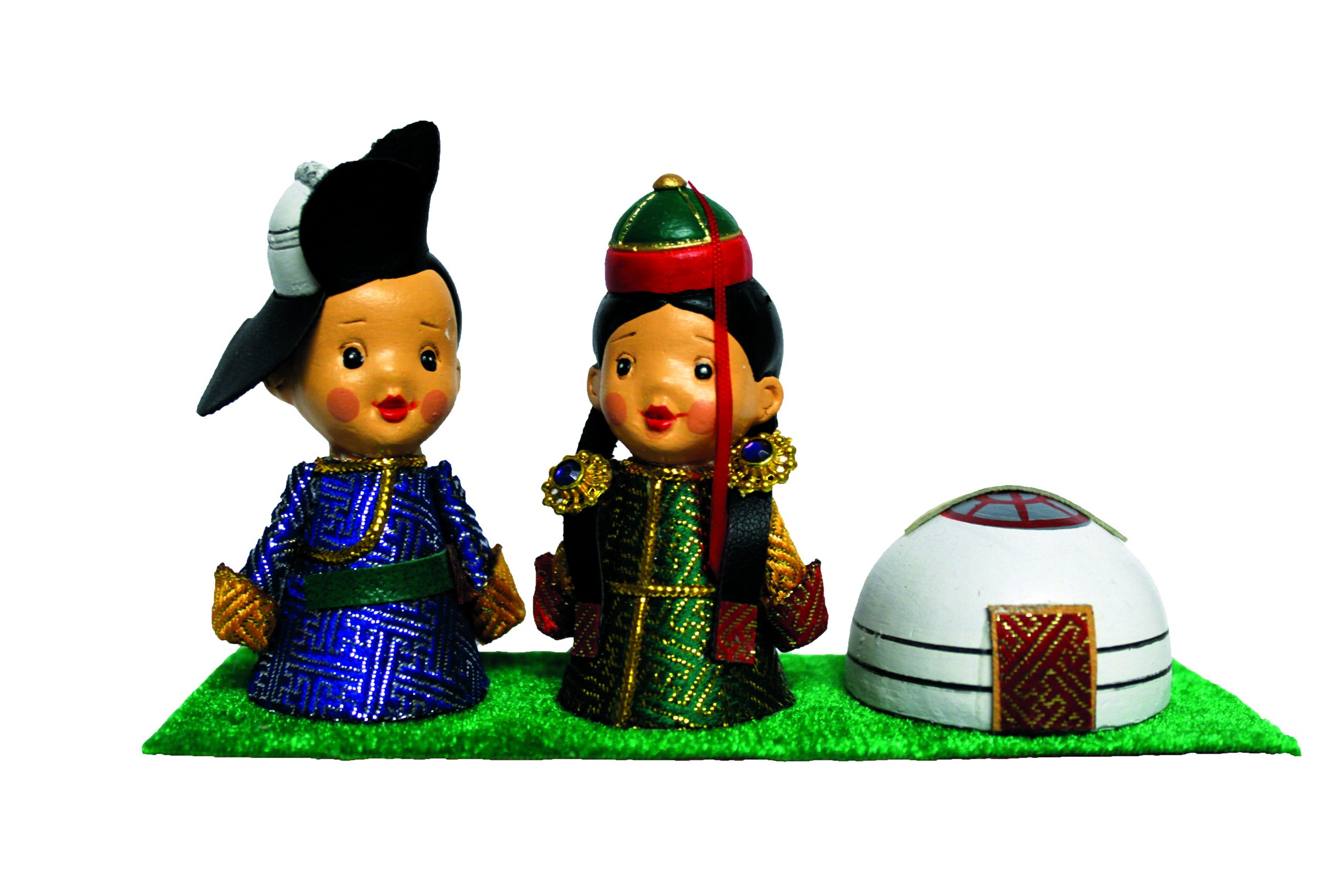Queen Amidala’s wardrobe in the Star Wars movies did not come from a galaxy far, far away. It came from the simple Mongolian countryside. When concept artist Iain McCaig and costume designer Trisha Biggar worked to create an exotic, regal look for their leading lady, Mongolian fashion offered the richness they were looking for. But traditional Mongolian clothing is much more than a great source for costume ideas; each article of clothing carries rich meaning for the Mongolian people.
 Mongolians’ unique way of life is the root of their clothing fashion. Most Mongolians are nomadic herders who live off the land. Their homes, called gers, are similar to tents in that they can be taken down, moved, and set back up in another location. With these portable homes, Mongolians are free to move anywhere in the countryside. Nomadic herders rely on this mobility not only to give their livestock enough space for grazing, but also to keep themselves connected with the natural landscape of their nation—royal mountains, wide spaces, rolling hills, and endless skies.
Mongolians’ unique way of life is the root of their clothing fashion. Most Mongolians are nomadic herders who live off the land. Their homes, called gers, are similar to tents in that they can be taken down, moved, and set back up in another location. With these portable homes, Mongolians are free to move anywhere in the countryside. Nomadic herders rely on this mobility not only to give their livestock enough space for grazing, but also to keep themselves connected with the natural landscape of their nation—royal mountains, wide spaces, rolling hills, and endless skies.
From their heads to their toes, Mongolians wear symbols that remind them of these things that matter most. Ariunbolar Dorjsembe, a native Mongolian who works with Boojum Expeditions promoting Mongolian travel, offers insights into the symbolic nature of Mongolian clothing. To Mongolians, traditional clothing goes far beyond fashion. Through the symbolism of their clothing, Mongolians feel a strong national identity as well as union between their present nation and their past.
The shape of this summer hat is symbolic of Mongolian culture. According to Ariunbolor, the pointed top symbolizes “uprising, prosperity, and unity of the nation.” Coming down from the point, the body of the hat domes out into a bowl shape; this “dome shape represents the ger, the traditional Mongolian dwelling,” and emphasizes the importance of family. Ariunbolor explains that around the edges of the hat there are scalloped flaps that look like mountains or hills; this element of the hat reminds Mongolians to live peacefully in nature.
Deel (Robe)
The deel is the ultimate in function and fashion. Similar to a bathrobe, the deel has long sleeves and front material that wraps across the front, left over right, fastened by loop-and-knot style buttons. To create a snug fit, a cord, sash, or belt is tied around the waist. With two pieces crossing over the top of one another, the material forms a front pocket. Ariunbolor explains that this pocket is often used to hold a baby. When unfolded, the deel can also be used as a blanket.
Bus (Belt)
Mongolians wear brightly colored and beautifully patterned deels for day-to-day activities, but for special celebrations, they will often trade out their cord, sash, or belt for a fancier one. It’s common for Mongolians to ornament the belt buckle with soyombo, the national symbol found on the country’s flag (see opposite page). Ariunbolor explains that each part of the symbol stands for something. The two vertical poles that frame the symbol stand for the “stability of the country.” Between the two poles is the yin and yang, which emphasize “being alert all the time for the good of the country.” Stacking above the yin and yang at the top of the soyombo symbol are moon, sun, and fire icons. These three icons together represent the “continuous prosperity of the country.” The fire icon alone also represents “past, present, and future” by the three tongues of the flame.
Gutal (Boots)
Like everything else they wear, even the way Mongolians clothe their toes tells a part of the story of their way of life. Mongolian boots are made of cowhide leather with a felt lining “sock.” The sock can be removed in order to make the boot cooler in the summer. The boots are designed to symbolize gentleness and harmony with the earth. At the tip of each boot, the toe is turned up to avoid digging into the earth with each step.
—Lauren Mortenson



Fantastic article. Cool.
What an interesting way to bring fashion to Stowaway. And yet another Star Wars reference for this issue